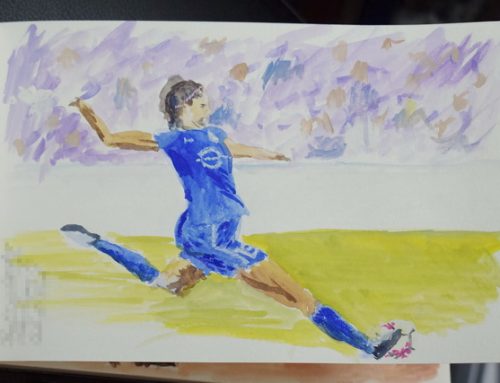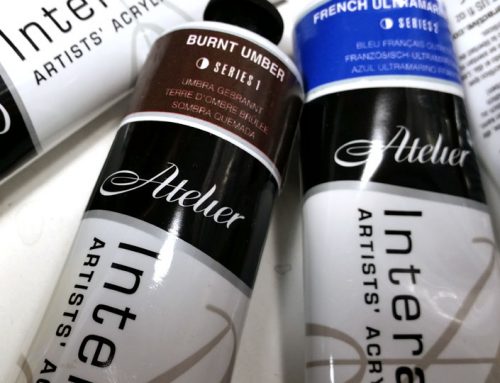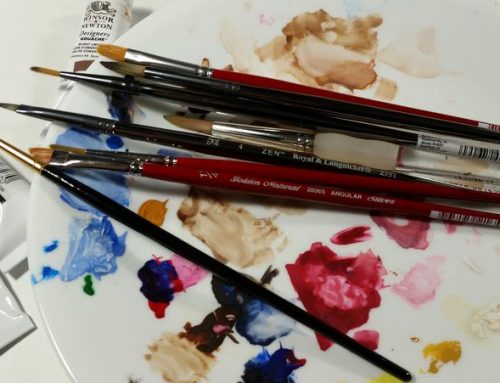Today, when I was prepping boards for acts of art, it was again hammered home why the higher price of Ampersand’s family of “bords” is worth it.
I find the best surface for airbrushing is smooth but with some “tooth” — fine scratches that help the paint to adhere, but not coarse enough to make erasing, scratching, or wiping a problem. With a product like Ampersand’s Claybord, for most projects I find it to be too smooth for good paint adhesion and it has some very fine swirly tool marks that can sometimes make their presence known. I sand the surface with 600-grit sandpaper to take care of the swirls and help the paint get a good grip. Ampersand’s Gessobord
presents a different problem: too much texture. It’s a fine texture that wielders of hairy-sticks probably won’t mind, but for airbrushing it’s just a tad too rough to be ideal. I knock it down with 400-grit sandpaper followed by an optional finish of 600-grit.
What makes Ampersand’s products special is that they have enough of a coating to stand for this sort of abuse. They are clearly intended for those who have a habit of working their supports before they start painting. In fact, with Scratchbord, I took a spare piece to see how much scratching and scraping it would take to work through the clay to the hardboard. A lot. After that test, I stopped being concerned that I’d ever scratch all the way through when working on a piece.
As I said, I was prepping boards. I had sanded a Claybord that had already been used and cleaned off once before. It came through without a problem. I then sanded a Gessobord for the project whose start is imminent. Except for some sand-through on the corners (which is almost inevitable), the board looks great. I then decided to sand a gessoboard I got from a local art store. They carry Ampersand bords except for Gessobords, so I bought the brand that they do carry. I’ve used this kind of board before with mixed results, but I didn’t think anything when it came to sanding it smooth.
Ack!
![The image at left is typical corner sand-through (Ampersand Gessobord); The right image shows major sand-through at corners and edges and (circled) near-sand-through in the work area ([Name withheld] Gessoboard).](https://i0.wp.com/cjcs.com/wp-content/uploads/2010/07/sand-through-4801.jpg?resize=480%2C185)
The image at left is typical corner sand-through (Ampersand Gessobord); The right image shows major sand-through at corners and edges and (circled) near-sand-through in the work area ([Name withheld] Gessoboard).
In less than half the time spent with Ampersand’s Gessobord, I’d already started sanding through the gesso of this clearly lesser offering when compared to Ampersand. It was bad enough on the corners and edges, but it was clearly dangerously thin in the working area. The board is essentially ruined.
With Ampersand giving, by my guess, a surface about 3x thicker than what easily-found competitors provide–for just a small amount more money–there really is no decision to be made. The less costly board provides a false economy. Ampersand shows that sometimes art supplies don’t cost more just for profit–they cost more because they are truly that much better (and the price isn’t that much more). If you are looking for gessoboard, clayboard, or scratchboard, my one and only recommendation is to buy Ampersand. You won’t be sorry.





